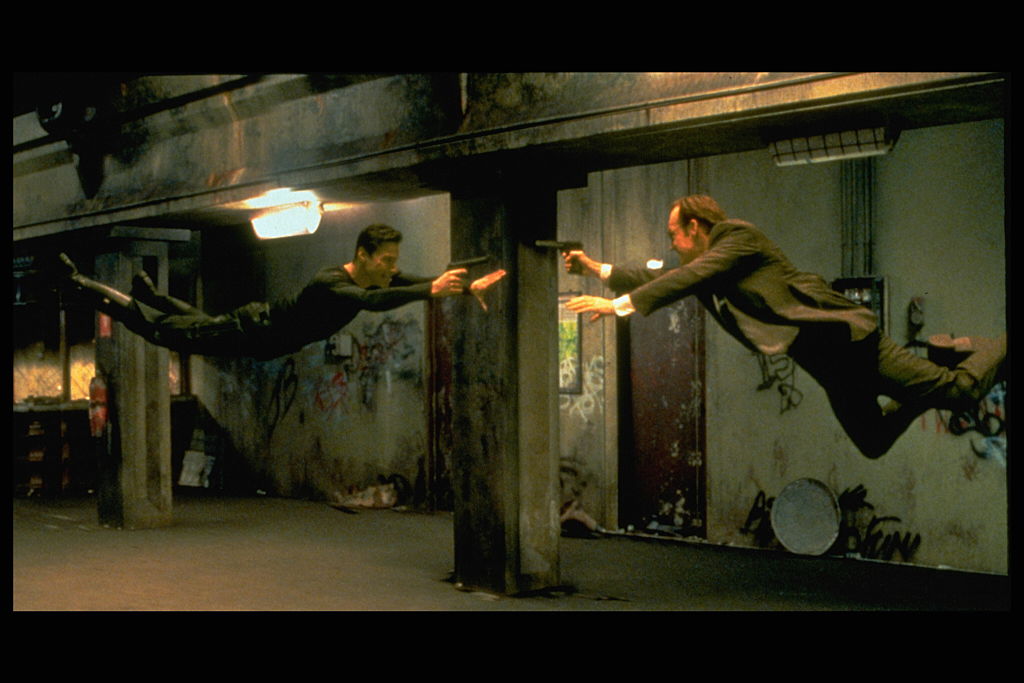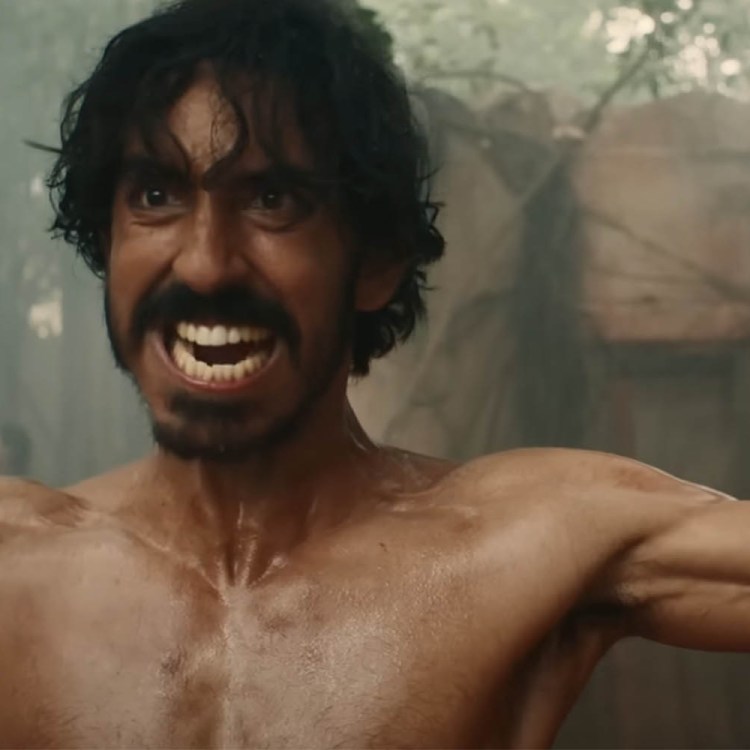RealClearLife has partnered with InsideHook, the essential lifestyle guide for adventurous and established men. Sign up to get the best of InsideHook’s recommendations and advice delivered to your inbox every weekday.
On March 31, 1999 The Matrix debuted.
For its time, the film was a monumental accomplishment in the fields of sound, cinematography and special effects. The Academy awarded it four little gold men, all in technical categories. Roger Ebert said, “It uses flawlessly integrated special effects and animation to visualize regions of cyberspace.” A.V. Club wrote, “Where other films are done in by the freedom offered by computer effects, The Matrix integrates them beautifully.” The Los Angeles Times noted that“The Matrix combines traditional science-fiction premises with spanking new visual technology in a way that almost defies description.”
And me? I never saw it.
I was nine years old at the time of release, so I don’t blame my parents for not taking me to see it in theaters. In the subsequent years, I was never able to find the time, for one reason or another. I started watching it once, but shut it off after about 30 minutes because I wasn’t in the mood (or maybe I subconsciously knew I wanted to eventually write this article).
Consuming a seminal piece of media after its release is an interesting experiment. I obviously know what The Matrix is about; I haven’t been living under a rock (or in The Matrix?) after all. Thanks to the ubiquity of certain scenes and visuals via YouTube, internet memes, parody videos and more, I feel like I’m already privy to all the major moments in the film. I knew what The Matrix is, I knew the scene where Morpheus calls Neo on the delivered cell phone, I knew the red pill vs. blue pill conundrum, I knew the shootout and the bullet-limbo sequence. So through the powers of interpretation and extrapolation, I had already put together my own version of The Matrix in mind — a bit of a meta concept, given the film’s premise.
And thanks to this Frankenstein’d version of the movie I had built up in my own head, I didn’t really find it necessary to watch it, especially considering a huge draw of the film were its “groundbreaking special effects,” which would surely look antiquated 20 years after the fact.
That being said, as a piece of the pop-culture canon, I still felt obliged to watch it.
So on the occasion of the film’s 20-year anniversary (it was released March 31, 1999), I decided to screen it for the first time. My objectives were multifold: I wanted to see if A) it would live up to the version I had built in my mind; B) the effects had aged as poorly as I imagined; and C) it still held any cultural relevance today. Below is a timestamped examination of the film, along with my takeaways from all the major scenes.
Intro
I’ve seen this numbers sequence countless times in other forms of media, so I’m familiar with it. It still looks good. I can’t really see how if this was made today it would be much different. But, oh, nope, now we’re going through some wires or circuits or something that looks like a late-’90s PC screensaver.
:03
Agent Smith makes his first appearance. Hugo Weaving is great, but all I can see is Lord Elrond from The Lord of The Rings franchise.
:05
The opening chase scene where we see Trinity fleeing from the agents. She bends the laws of physics with a practiced insouciance. It looks pretty damn realistic until the moment where she catapults head first into an open window.
:06
Trinity uses a payphone to get out of The Matrix. I hope this movie isn’t overly reliant on payphones, because that will severely date it more than the special effects ever could.
:10
:11
Neo meets Trinity for the first time. Mostly just a depressing reminder that societal norms haven’t changed much, since Neo is surprised that Trinity, a well-lauded hacker, is in fact a woman.
:13
Neo’s work computer is a damn brick. And that Nokia phone he gets from FedEx is a slightly smaller brick. The scene where Morpheus is guiding Neo through the office has lost a lot of its drama because I’ve seen it multiple times and all I can think of is the Chappelle’s Show parody.
:19
With regard to the file he has on Neo, Agent Smith claims that “every computer crime we have a law for.” Computer crimes. Sounds like something your grandpa would write. In 2019, the digital universe doesn’t just live on desktops and notebooks … it lives on phones, refrigerators, light switches, toilets. Cybercrime is probably the more appropriate term.
:30
The red pill vs blue pill scene was everything I imagined it would be based on the myriad memes I’ve seen about it. Neo seems to take an unnecessarily large swig of water in order to get down the pill though. Good for you for wanting to know the truth Neo!
:31
When they get to the command center and meet the crew their command center looks about like what you would think a computer command center would look like in the late ‘90s. Joe Pantoliano as Cypher with just a killer of an opening line: “It means buckle your seatbelt Dorothy, cause Kansas is going bye-bye.”
:33
Bald Keanu! The endless towers of human energy pods look a bit dated, but the feel of post-apocalyptic doom and gloom works well here — enough to make the subpar graphics work, at least.
:42
Morpheus explains to Neo that this terrible new world is the consequence of the rise and takeover of artificial intelligence. This was not a new concept in 1999, nor is it one that is played out in 2019 — in fact, it’s probably more relevant than ever as we get closer and closer to the reality of robot overlords doing any and everything that humans can. If anything, this scene has improved with age: rarely has the idea of reality-as-simulation been presented in such a succinct but comprehensive format.
:50
While the screens portraying all the new skills (kung fu, jiu jitsu, etc.) look incredibly dated, it did make me wonder how long until we are able to do some version of this using VR. We’re probably still a long way off from directly uploading knowledge to our brains, but again, this seems more feasible now than it did in ‘99 (maybe something like dream learning?).
:51
:55
Neo attempts his first building jump. After falling short, he rebounds from the concrete like a quarter-machine bouncy ball. FX level is Space Jam at best.
:68
Random thought: these sunglasses probably looked really nerdy at the time, but nowadays they’re very hip and I see them all the time on Instagram “influencers.”
:87
I gotta say, I did not see this being a movie where one of the good guys turned on the rest of the group. But is what Cypher wants — blissful ignorance — really all that bad? What type of future do we as humans want to live in? One where we’re completely free, or one with less suffering? It’s a dilemma that’s been around since the dawn of civilization.
:102
The famous lobby shootout. People are running up and down walls. Bullets and tile and ceramic are flying everywhere. Somehow Neo and Trinity don’t get hit. I can’t tell if it’s because I’ve seen it a handful of times before or not, but it still looks pretty good. As a viewer, I’m aware that this shot is much more about amazing choreography and camerawork than special effects. Flying up the elevator shaft after the shootout, however, doesn’t look so good. The Wachowskis seem to have trouble with objects flying through the air.
107:
The scene where Neo dodges the bullets is great. Again, this was about revolutionary cinematography more than special effects (the phenomenon literally owes its trademarked name to this film). But I’ve seen this scene so many times that it’s lost a lot of its gravitas.
:124
Trinity confesses her love for Neo after he appears dead. This is the part that frustrated me the most. How can she love him?! She just met him. Not all movies need romance. Especially unrealistic romance. It just seems like an unnecessary trope that the filmmakers forced into the plot to appease audiences.
126:
Holy shit, he’s the one! Pretty exciting when he stops the bullets with his mind and then takes care of Agent Smith.
Closing thoughts:
Overall, the film lived up to and even exceeded my expectations. It does an excellent job of creating a style and tone that all of the disparate parts — many of which, as noted, I was previously familiar with — could not accomplish on their own. The special effects hold up much better than I anticipated; while many of them don’t look “realistic,” per se, they rival anything you would find today. But where The Matrix really lives on is its commentary on human culture and sociopolitics. The film confronts the issue of our reality becoming suffused with an alternate virtual reality, a condition that looks more eerily prescient with each passing year. Consider Instagram, itself is a version of the matrix: individuals project the version of themselves that they want others to see, rather than the real, living world they occupy. Ultimately, The Matrix is a film about technology’s potential for destruction — and in that, it will probably never cease to be relevant.
If you enjoyed this article from InsideHook, they also have an excellent daily email with similar articles that spans the wide world of men’s lifestyle. You can sign up here.
This article was featured in the InsideHook newsletter. Sign up now.
























